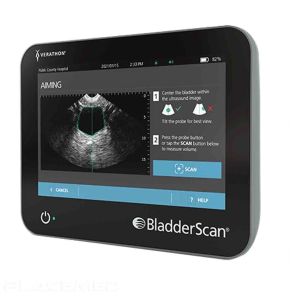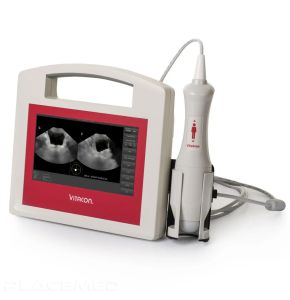Bladder scanner
KAIXIN KC80 Bladder Scanner
Price on request18/11/2024 574
BladderScan Prime Plus by VERATHON
Price on request18/11/2024 637
The BladderScan i10 bladder scanner by VERATHON
Price on request18/11/2024 948
Portable Ultrasound Bladder Scanner - VitaScan PD 100570CP
Price on request18/11/2024 690
Bladder Scanner: A Non-Invasive and Effective Solution!
Discover the precision in bladder imaging with our dedicated "bladder scanner" booth. Our professional partners showcase a wide range of bladder scanners. We have selected the best devices for accurate and rapid diagnosis.
These medical tools help detect bladder issues and monitor treatments. They are designed to improve patient care, are easy to use, and durable. Visit our booth today and choose from the best medical equipment on the market.
What is a Bladder Scanner and Why is it Revolutionary?
The bladder scanner is an innovative medical device that uses ultrasound technology. This technology allows for non-invasive measurement of the patient's bladder volume. Unlike traditional methods that often require the insertion of a urinary catheter, this medical device provides precise information without discomfort for the patient. This technological advancement represents a revolution in the field of urology and nursing care. It offers a safe and effective alternative for evaluating bladder function.
In the current context of modern medicine, where patient well-being is paramount, this device, also known as a bladder ultrasound, meets an essential need. It not only reduces the risks associated with invasive procedures but also enhances the overall patient experience. By eliminating the need for repeated bladder catheterizations, it helps reduce the stress and anxiety related to medical examinations.
Additionally, it facilitates the work of healthcare professionals. It provides a quick and reliable way to assess residual urinary volume, thereby aiding in the diagnosis and management of various urological conditions. This technology integrates seamlessly into current clinical practices, enhancing the efficiency and quality of care provided.
How Does the Bladder Scanner Work and How Reliable is It?
The operation of this device is based on the use of ultrasound waves. The device emits high-frequency sound waves that pass through the body's tissues and are reflected by the bladder. These echoes are then captured and analyzed by the scanner to calculate the volume of urine present. This process is quick, painless, and safe for the patient.
The accuracy of measurements obtained with a bladder scanner is remarkable. Thanks to advanced algorithms and cutting-edge technology, the device provides reliable data that helps clinicians make informed decisions. Several clinical studies have demonstrated the accuracy of bladder scanners compared to invasive methods, confirming their utility in medical practice.
- Ultrasound Technology: Uses safe and non-ionizing waves.
- Immediate Results: Provides real-time measurements.
- Proven Reliability: Validated by scientific studies.
In addition to its precision, this medical device is designed to be user-friendly. Intuitive touchscreens and simple user interfaces allow medical staff to use it without extensive training. This ensures that measurements can be taken quickly, which is essential in busy clinical environments.
In What Clinical Cases is the Bladder Scanner Used?
The bladder scanner has numerous clinical applications, making it indispensable in various fields of medicine. One of its primary uses is the evaluation of post-void residual urinary retention. This means checking if urine remains in the bladder after the patient has urinated, which can indicate issues with bladder emptying.
It is particularly useful for:
- Post-Operative Patients: Monitoring bladder function after surgery.
- Neurological Patients: Assessing bladder disorders due to neurological diseases such as multiple sclerosis or Parkinson's disease.
- Urological Patients: Managing conditions like benign prostatic hyperplasia or recurrent urinary infections.
In pediatrics, the bladder scanner is also valuable for children who have difficulty urinating or who present with congenital urinary system anomalies. It allows for a painless evaluation, which is crucial for young patients.
In nursing homes and long-term care facilities, it helps monitor residents who may have continence issues, thereby preventing complications such as urinary infections or kidney damage.
What Are the Advantages of the Bladder Scanner Compared to Traditional Methods?
The main advantage of the bladder scanner is that it avoids unnecessary bladder catheterizations. Catheterizations involve inserting a catheter into the bladder to drain urine, which can be uncomfortable and carry infection risks. By avoiding this invasive procedure, it significantly improves patient comfort.
Here are some key advantages:
- Reduced Risk of Urinary Infections: Fewer invasive manipulations mean fewer chances of introducing bacteria into the urinary tract.
- Improved Patient Comfort: Painless and non-stressful procedure.
- Increased Efficiency: Saves time for medical staff, allowing them to focus on other tasks.
- Cost Reduction: Fewer consumables used and fewer treatments for infections.
Moreover, the use of bladder scanners can help reduce patients' hospital stay durations by enabling early detection of urinary problems. This positively impacts not only the patient but also the healthcare system as a whole.
How is Medical Staff Trained to Use the Bladder Scanner?
One of the major strengths of the bladder scanner is its ease of use. Nursing staff can be quickly trained through short training sessions and practical demonstrations. The device's interface is generally user-friendly, with clear on-screen instructions.
Training includes:
- Learning to Operate the Device: Correct placement of the transducer on the patient's abdomen.
- Interpreting Results: Understanding the displayed measurements and their clinical implications.
- Device Maintenance: Cleaning and maintenance procedures to ensure optimal performance.
Once trained, staff can use the scanner autonomously, improving the efficiency of the healthcare service. Clinical decisions can be made quickly without waiting for more complex test results.
What is the Impact of the Bladder Scanner on the Patient Care Pathway?
The bladder scanner integrates smoothly into the care pathway by offering an effective screening and monitoring method. It allows for rapid intervention in case of problem detection, which can prevent serious complications.
The impact on patient comfort and satisfaction is significant. Patients appreciate not having to undergo invasive procedures, which enhances their overall care experience. This can also increase patient trust and cooperation with medical staff.
Furthermore, by facilitating rapid diagnosis, this bladder device contributes to more effective treatment. Care protocols can be adapted in real-time based on the results, improving clinical outcomes.
Finally, the widespread use of the bladder scanner can have a positive impact on the healthcare system by reducing costs associated with nosocomial infections and prolonged hospitalizations. It represents a technological advancement that benefits both patients and healthcare professionals.
 Francais
Francais 



